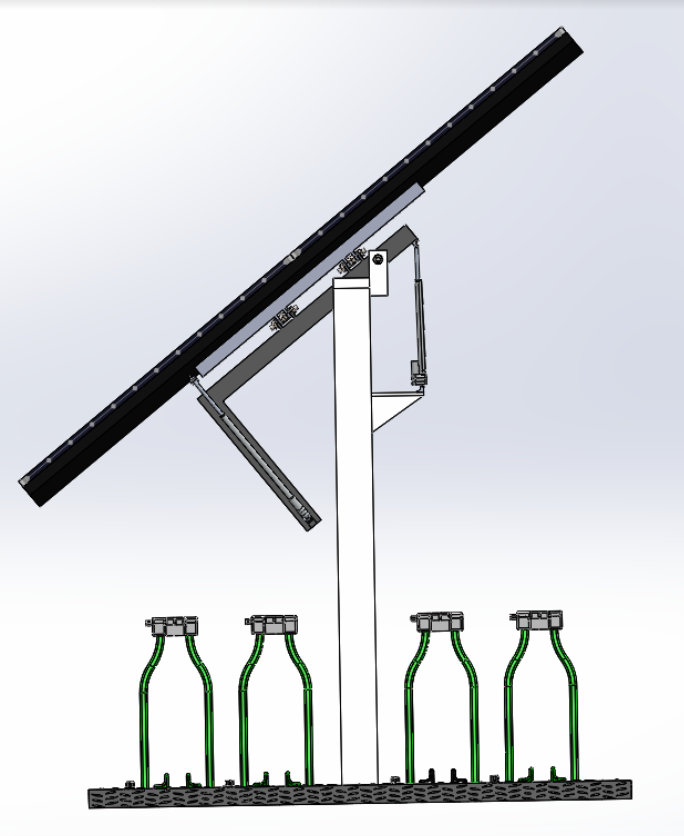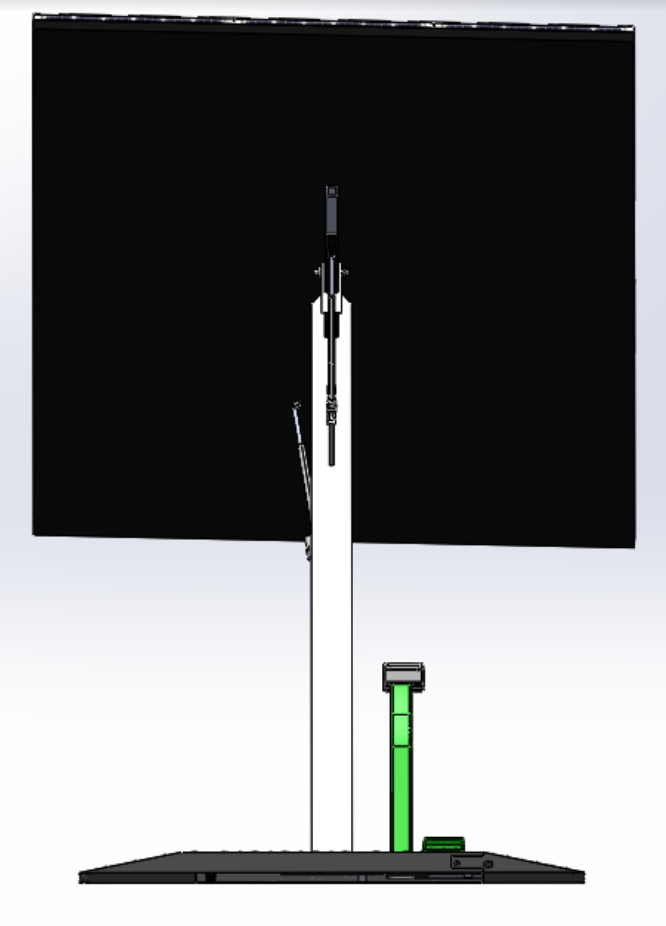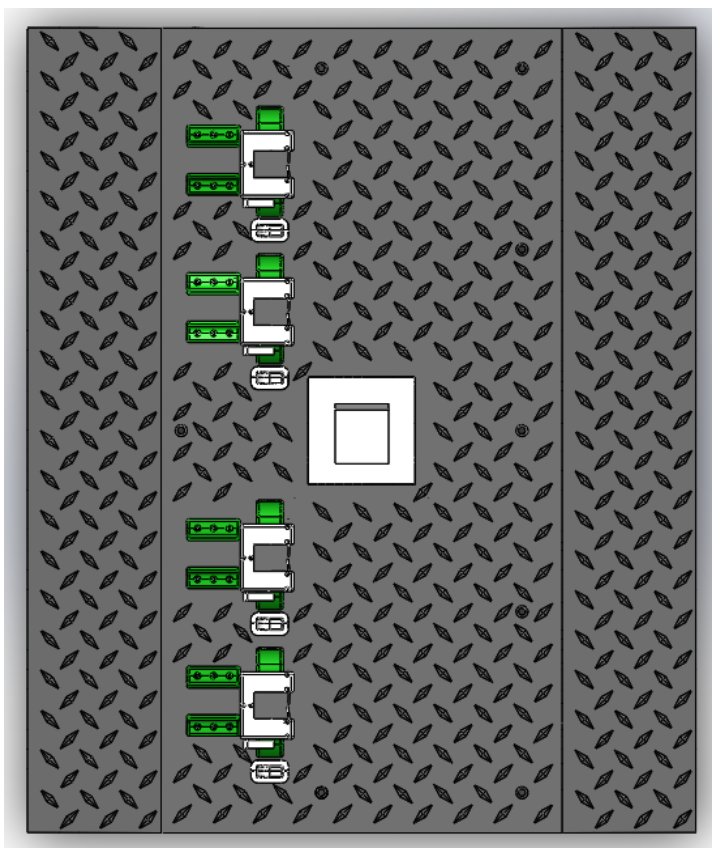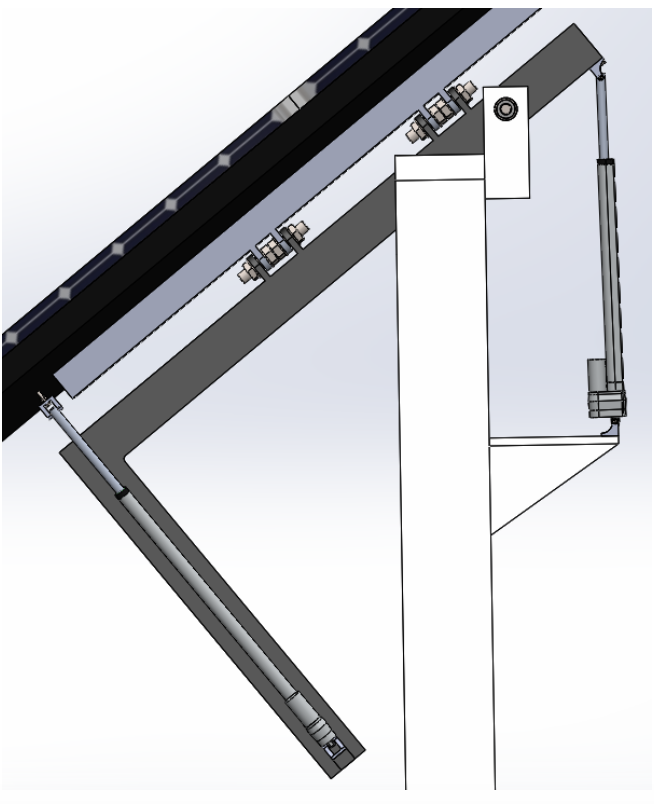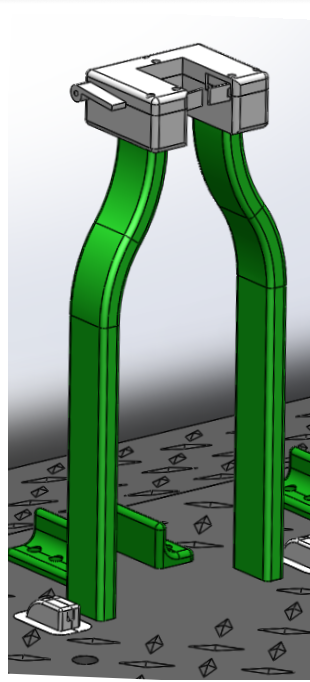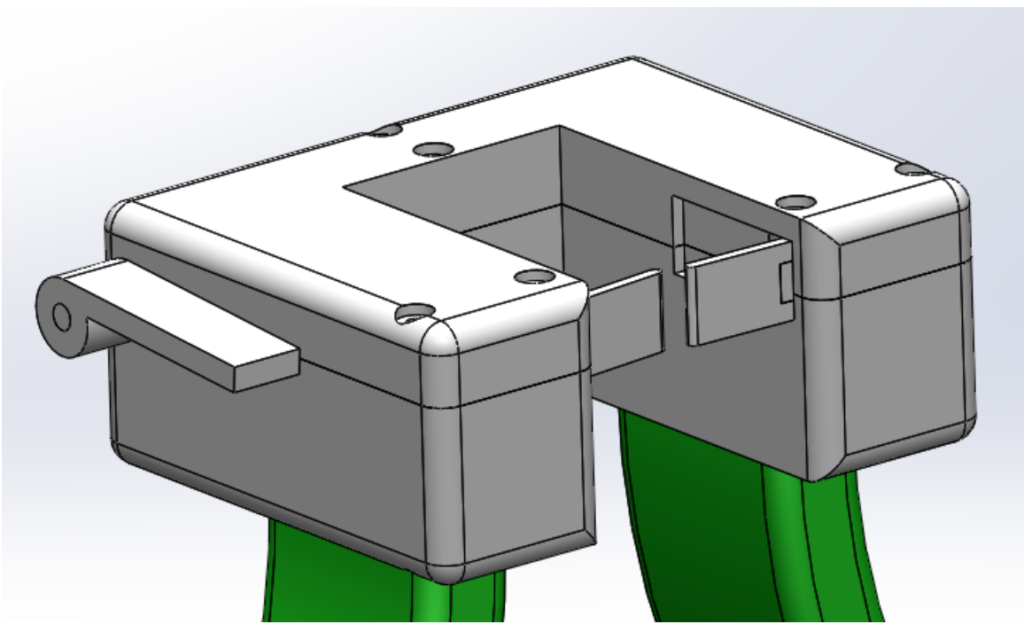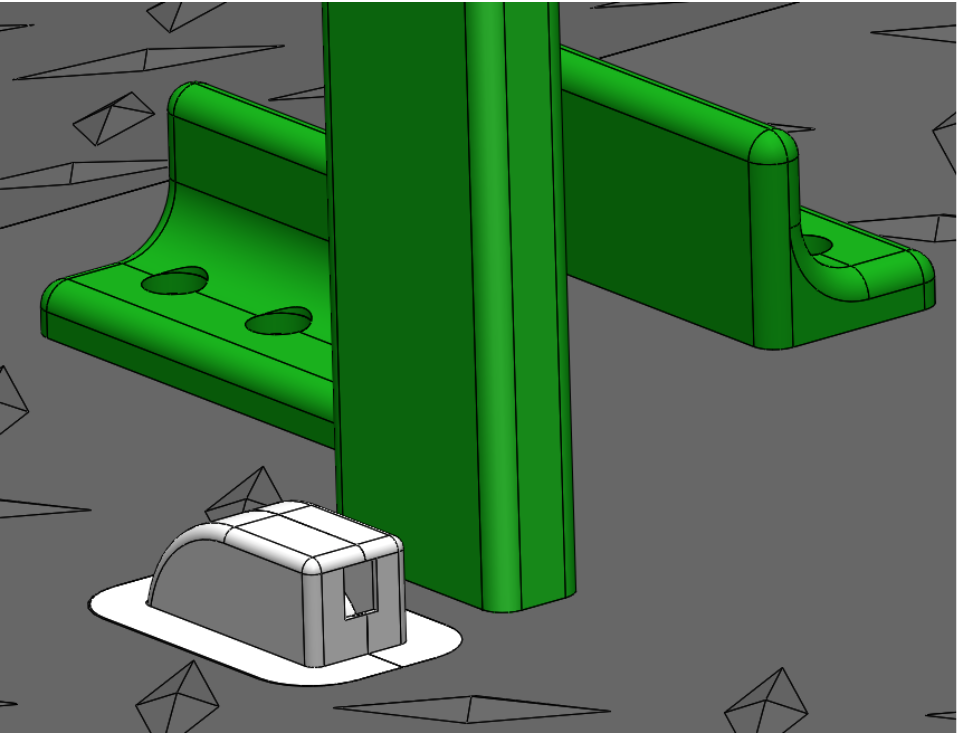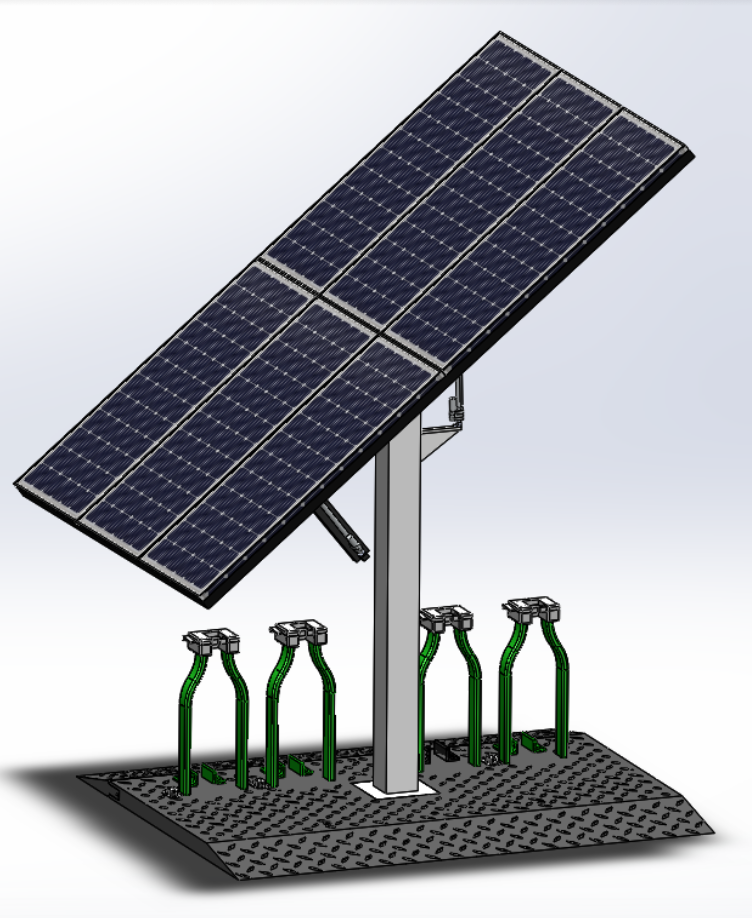Project Category: Mechanical
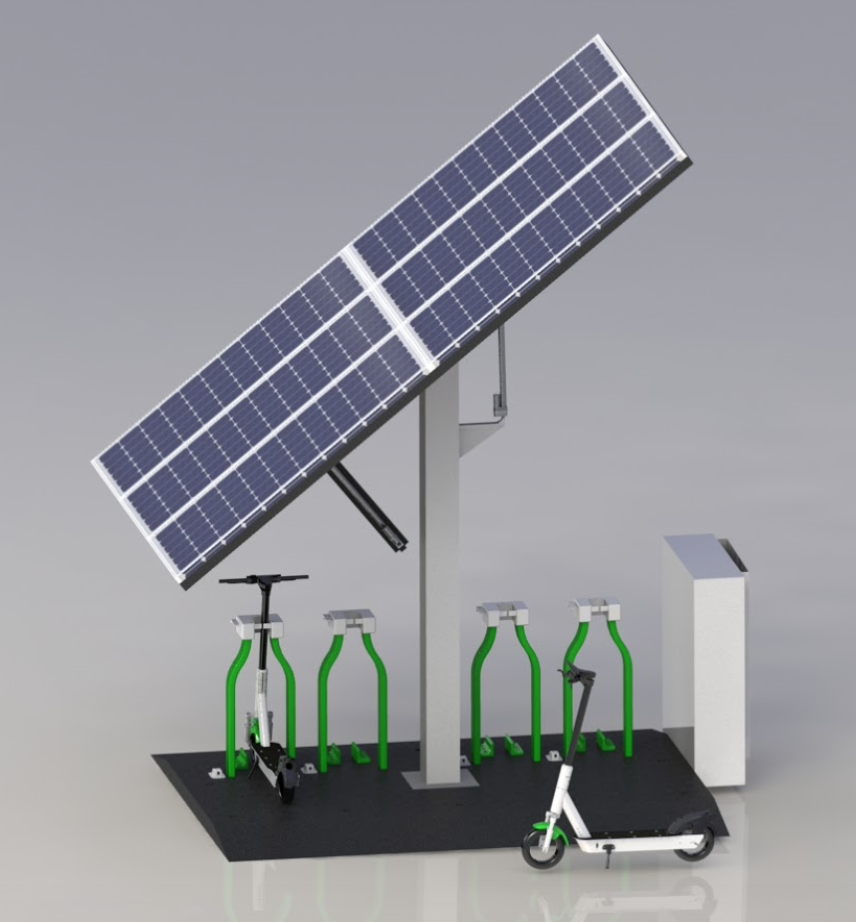
Join our presentation
About our project
The creation of electric vehicles has seen the rise of smart mobility options, such as electric scooters, electric bikes, and electric boards; presented by companies such as Lime and Bird. While these options present a healthier energy source as opposed to conventional gas vehicles, their electric power source may not be as environmentally conscious as they seem. Powering these vehicles with sustainable, renewable energy sources contributes to improving the overall health of the planet and working towards a green future.
The objective of our mechanical engineering capstone project was to design a portable solar-powered charging station for electric scooters, to promote the use of renewable energy sources and address the safety concerns related to scattered scooters.
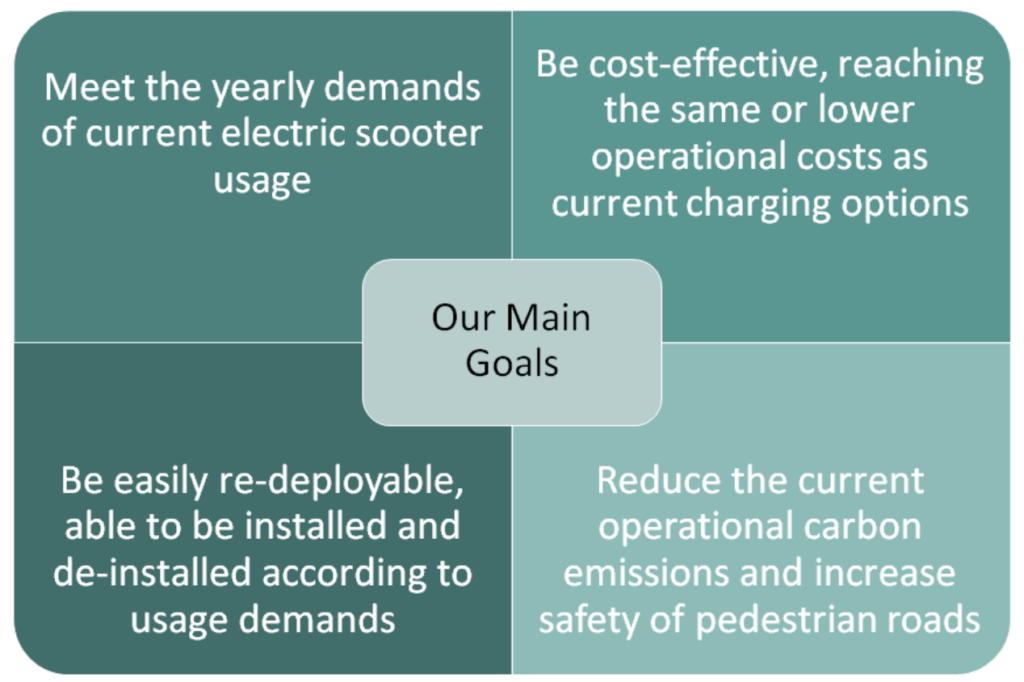
Meet our team members

Ruo Huang
5th Year B.Sc. Mechanical Engineering
Ruo is in her final year of mechanical engineering at the University of Calgary, with a minor in manufacturing engineering. She is the design and verification lead for the base platform and main frame. Her favorite part of the Capstone project was working together with the group and being able to apply learned knowledge to create a full prototype. In her spare time she loves to work on modelling and animation, and swimming.

Huda Azeem
5th Year B.Sc. Mechanical Engineering
Huda is in her final year of mechanical engineering at the University of Calgary, and the design & verification lead for the solar panel movement mechanism. Her favorite part of the Capstone project was working with such an incredible group. In her spare time she loves to travel and read books.

Kushan Wickramarachchi
5th Year B.Sc. Mechanical Engineering
Kushan is in his final year of mechanical engineering program with a minor in manufacturing engineering. He was responsible for development of the electrical and financial aspects of the design. His favourite part of the project was learning how to intertwine both the engineering and business aspects of product design. Kushan loves to spend his free time reading, running,and exploring his passion for 3D printing and design through various individually motivated projects.

Chantalle Maundy
5th Year B.Sc. Mechanical Engineering
Chantalle is in mechanical engineering student completing my final year, with interests in biomedical engineering and technical writing. She enjoyed gaining experience with design and engineering analysis through this project. Chantalle is passionate about music, and in her spare time enjoys playing the piano, reading, and cooking.

Masooma Tahir
5th Year B.Sc. Mechanical Engineering
Masooma is currently completing her B.Sc. in Mechanical Engineering. She was responsible for the project management and carbon-emissions section of the project. Her favourite part of the Capstone project was learning about renewable energy and it’s integration into micro-mobility sector. In her spare time she loves to draw, paint and learn about bio-technology. Her goal is to pursue a career in the renewable energy sector and technology industry.
Details about our design
WHAT MAKES OUR DESIGN INNOVATIVE
Features
Double-Axis Actuation
The charging station features double-axis solar module movement, so it may fully track the path of the sun, optimizing energy production through the whole day. The movement range is 0-180 degrees East-West, and -60 to 60 degrees North-South from the Equator.
Algorithmic Solar Tracking
The charging station features algorithmic solar tracking to determine its double-axis actuation pattern. The installation software will take in the time zone, latitude, longitude, and station direction, and automatically adjust the solar modules to face the sun’s path.
Energy Storage Via Battery
The charging station features two Tesla Powerwalls as the battery solution. This gives an overall capacity of 2 days’ worth of power to supplement current solar charging. The batteries, solar module, and charging outlets will be connected together via a central controller.
Spring-Actuated Scooter Holder
The charging station parking rack will feature a spring latch system – it will automatically latch closed when a scooter is pushed in to hold it secure. Press the side button down to open the latch, rolling charged scooters out to use.
Specifications
| Solar Module | 6 x LG Electronics Inc. LG375Q1C-V5 Monocrystalline Module | ||
| Battery | 2 x 13.5 kWh Tesla Powerwall | ||
| Scooters Charged at a Time | 4 Scooters | ||
| Scooters Charged per Day | 16 Scooters | ||
| Time for a Full Charge | 5 Hours (0.537 kWh battery) | ||
| Station Dimensions | 3m x 2.5m x 3m (L x W x H) | ||
| Station Weight | 2000+ kg | ||
| Prototype Cost | $38 833.72 |
WHAT MAKES OUR DESIGN SOLUTION EFFECTIVE
Even though using electric scooters is an energy-efficient way of transportation. There are issues related to the charging of scooters. Currently, the scooter companies pay individuals to charge scooters, this is not an efficient way because an individual has to pick up a scooter on their own using a vehicle and drive to a designated charging spot, after charging, the scooters need to be placed back at a spot that is specified by the company. This sequence of charging is time-consuming and introduces greenhouse gas emissions produced by the scooter transport vehicles. As well the cluttering of scooters can become a safety hazard. According to the“Calgary Electric Scooter Share Pilot” stakeholder report, from 9600 participants, about 29% believe that there is a need for safe infrastructure to park the scooters.
Overall, our solar powered charging station will decrease electric scooter CO2 impact by 27%, while providing a 27% increase in scooter availability time throughout its season. From our LCOE calculations, we are also able to conclude that our charging station will become profitable in 2 years and save close to $250,536 over 10 years.

VALIDATION OF OUR DESIGN SOLUTION
Even though due to Covid-19, we weren’t able to create a prototype, we have validated our design solution through simulations models. We conducted Finite Element Analyses in SolidWorks, LTSpice and MatLab for controller circuit analysis and, and SAM for PV module simulations. As such, we have split up the presentation into 3 categories.
The first category is meant to ensure that the internal structural components that will be handling the scooters are robust enough to withstand the loads they will be exposed to, and in a repeated manner. It will also output the final decision on how the chargers will be wired through the station.
Charging Port & Internal Structure Verification
- Locking Mechanism FEA
- Bolting Formation FEA
- Fatigue Analysis on Parts
The second category will ensure the structural integrity of the external components, both static and dynamic, and under wind loading. It will also output the stroke length needed for each of the actuators in order to chart the sun’s rays most effectively.
External Structure & Actuator Verification
- Motion Study and Movement Analysis
- Bolting and Actuation FEA
The output of the third category will be the optimized cost per month of plugging the station into the grid (as well as a power flow chart backed up with reasoning for its efficiency), as well as the final design that will show how the battery storage is built into the station.
Power & Storage Verification
- Power Flow and Capacity Prototyping
- Physical Storage Prototyping
FEASIBILITY OF OUR DESIGN SOLUTION
Our design solution is highly feasible and easy to implement. We designed our charging station keeping the end product in mind and considering the possibility of making this station into a commercial, mass-produced product. We conducted the financial analysis of our station including Levelized Cost of Electricity and Net Present Value of our charging station. For the project, we considered Calgary as our case study city and the data we used for our PV module calculations reflects this and with having LIME as our sponsor, we consistently got feedback from them regarding our design.
Operational Savings
Using the levelized cost of electricity and net present value financial analysis, we can conclude that our design provides:
- 85% operational cost reduction
- $250 000 cost savings over 10 years
- 27% usage increase
Sustainability
To meet federal and provincial emissions targets, it’s important to reduce greenhouse gas (GHG) emissions. One smart way to reduce GHG emissions is to use electric vehicles, as they can reduce emissions with Canada’s current electricity grid by 45% to 98% compared to a gasoline vehicle. Reducing emissions aids climate restoration. Our charging station will be using solar energy to charge the scooters to create a more environmentally friendly way of charging.
Safety
The charging dock will provide a safe infrastructure to help in decluttering the scooters and providing an organized parking space. Current issues include how scooters are often inconsiderately parked and pose danger to pedestrians. They may cause safety hazards for persons with disabilities ex. vision impaired, or parents with strollers or young kids. Implementing a docking station will reduce this issue.
COLLABORATIONS AND MEDIA OPPORTUNITIES
We would like to additionally showcase another group’s civil engineering capstone project, as linked below, due to great synergy between our research topics making space for further research and innovation. Their topic was regarding safety, business improvement, and parking recommendations for electric bikes and scooters analyzed using current trip data. As such, our project, if made into a physical prototype, would benefit from usage in their recommended parking locations, while their safety recommendations would be supported by the additional parking impetus our system would bring.
We are lucky to have been contacted by our sponsor and the University of Calgary for several opportunities to showcase our current project in different capacities. These showcases include speaking at the Standing Policy Committee on Transportation and Transit meeting regarding the Shared E-Bike and E-Scooter Pilot program, as well as taking part in a LiveWire Calgary interview, both of which have been included below. Additionally, our project has been placed as a semi-finalist group within the TELUS Innovation Challenge, as well as the Schneider Go Green Competition.
Partners and mentors
We would like to offer sincere gratitude to our mentors, sponsors and instructors who have helped us with this project. We would like to thank Dr. David Wood for providing us with great advice and feedback to improve our design, and guiding us throughout the academic year to make this project successful. We would also like to thank Jonathan Hopkins from LIME for being our industry sponsor and providing his expertise in making this project feasible.
We would also like to thank Dr. Simon Li for providing great resources and recommendations throughout our design process.

Our photo gallery
“A transition to clean energy is about making an investment in our future.”
– Gloria Reuben
Thank you for reading about our project!
